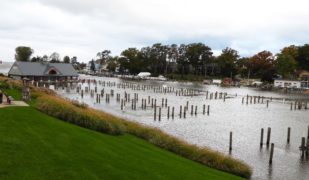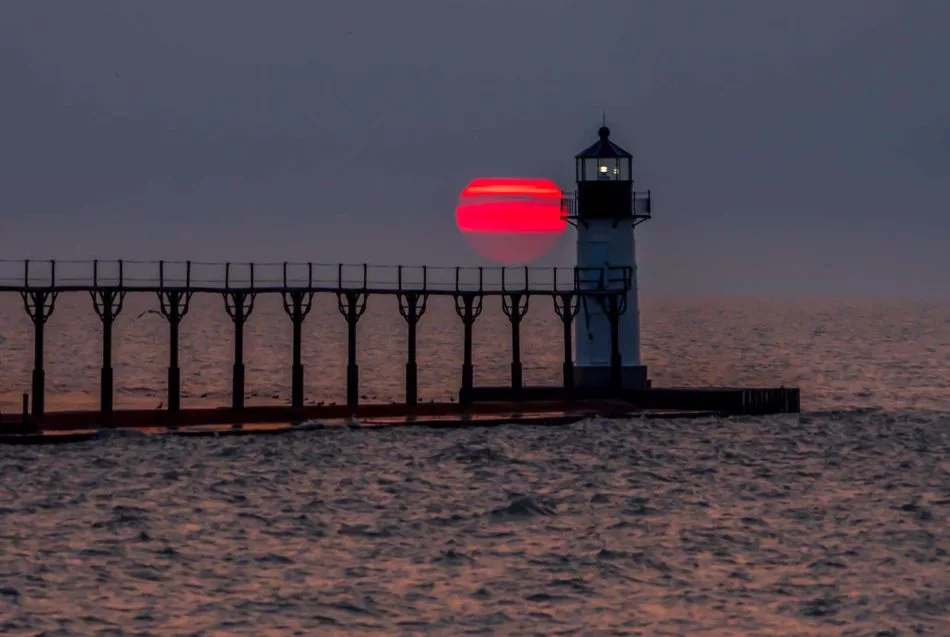Anybody who has taken the time for a post-quarantine visit to the beach, the marina, the bluff or even just along the river recognizes only too well what the U.S. Army Corps of Engineers is reporting today.
The Detroit District of the Corps reports today that Lakes Michigan, Huron, St. Clair and Erie all set new monthly mean water level records for May of 2020. Those water level records were previously set in 1986 on Lakes Michigan and Huron and just last year in 2019 on Lakes St. Clair and Erie. The Army Corps says today, “As we enter the summer months, all of the lakes are either in their period of seasonal rise or are reaching their peak, except Lake Ontario, which will likely begin its seasonal decline this month.”
Although most of the month was dry, the middle of May brought heavy rainfall to some areas of the Great Lakes basin, resulting in a wetter than average month for the Michigan-Huron and Erie basins. In the coming months, water levels are projected to continue to be near or above record high water levels on all of the lakes, except Lake Ontario. Significant erosion and flooding continues in many locations as water levels remain extremely high.
John Allis, Chief of the Great Lakes Hydraulics and Hydrology Office in the Detroit District, says, “The water level of Lakes Michigan and Huron has now risen above the peak level that was reached last year.”
The Corps most recent forecast projects that Lake Michigan-Huron will likely continue to set new record high monthly mean water levels throughout the summer and the peak July level could come close to surpassing the record high water level for all months in the period of record, which occurred in October of 1986. The U.S. Army Corps of Engineers urges those impacted by the high water levels last year to be preparing for similar or worst impacts over the next few months.
During response operations, Detroit District, Emergency Management Office conducts emergency operations to save lives and protect public facilities and communities. The Corps can provide technical assistance in the form of advice and expertise in the construction of temporary flood protection measures such as sandbagging, or direct assistance by providing flood fight supplies to state, county, or local public officials. Assistance is supplemental to local and state efforts and at the request of the state.
The Detroit District of the U.S. Army Corps of Engineers has conducted many on-site assessments under their technical assistance authority in 16 approved counties, and has provided flood-fight supplies under their direct assistance authority in two counties. To date they have given out 350,000 sandbags to counties to assist them in their flood fighting efforts.
In addition, the Corps says citizens of Michigan and Indiana may decide to work on personal construction projects to alleviate erosion or flooding, which could potentially impact the nation’s rivers, streams, wetlands and other aquatic resources that may require a permit from the Corps of Engineers’ Regulatory Office.
To find more information about Great Lakes high water, emergency management and the permit process, you can visit the link below which includes information about how to protect property and investments along the coast and related Corps programs and authorities. Here’s the direct link:
https://www.lre.usace.army.mil/About/Great-Lakes-High-Water/
The sunset photo accompanying this story on Moody on the Market is courtesy of Award-winning Berrien Springs professional photographer Molly Pate and the South Haven Marina flooding photo is courtesy of Tom Renner of South Haven.






